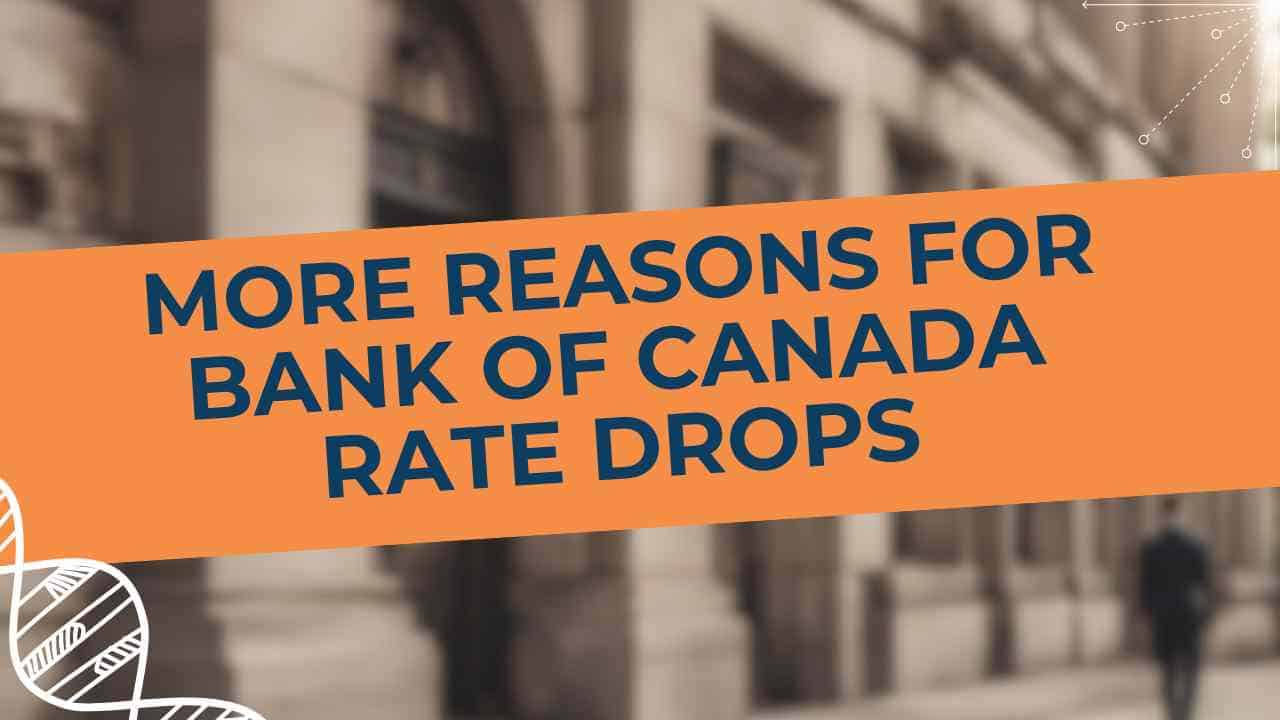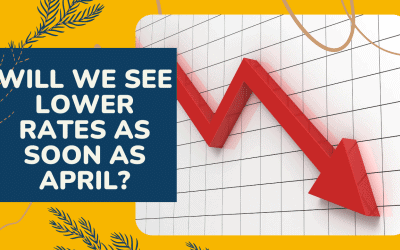As the world grapples with economic uncertainty, the decisions of central banks play a pivotal role in shaping the financial landscape. Recently, the United States Federal Reserve’s decision to hold its interest rates steady on December 13th, 2023, has cast a significant shadow over its northern neighbour, Canada. This move, or lack thereof, by the US Fed is particularly consequential for the Canadian economy. The dynamics of interest rates between these two nations are closely intertwined, with implications that extend beyond mere numbers.
In the complex dance of international finance, the differential in interest rates between countries can trigger substantial capital flows. When the US, which currently maintains a rate that is 0.25% higher than Canada’s, chooses to stand still, it places the Canadian dollar in a precarious position. A stronger US dollar often translates into a weaker Canadian counterpart, making the import of goods more expensive and adding strain to the Canadian economy.
In this context, the pressure mounts on the Bank of Canada. The decision to decrease rates, while seemingly necessary, is complicated by these international economic relations. The following will delve into the intricate reasons behind why Canada might soon see a drop in its interest rates, as explained by experts and recent economic trends.
The Canadian Economic Landscape
The current state of the Canadian economy paints a picture of a nation under financial strain. According to David Rosenberg, a veteran economist and president of Rosenberg Research, Canada is facing a ‘debt crisis’, but not the kind one might assume. As reported by BNN Bloomberg, Rosenberg emphasizes that the crisis is not in government debt, but rather in the household sector. Canadian households are grappling with a staggering debt-to-income ratio of over 170 percent.
This ratio, Rosenberg explains, might be manageable under lower interest rates. However, the Bank of Canada’s current overnight rate of five percent poses a significant challenge for most Canadians. The high rates, in conjunction with the debt levels, create an unsustainable economic environment, pushing households to the brink. Rosenberg argues that to avert a severe recession, the central bank will need to lower rates considerably.
Rosenberg’s analysis points to a fundamental issue at the heart of the Canadian economy. The high debt-to-income ratio is not just a number; it reflects the financial struggles of countless Canadian families. As they juggle with these debts, the current interest rates exacerbate their challenges, making it difficult for many to stay afloat. The necessity for rate cuts, therefore, is not just a matter of economic policy but a crucial step towards providing relief to these households.
Predictions for Rate Reductions
The question then becomes: how significant will the rate cuts be? Rosenberg, along with Ed Devlin, founder of Devlin Capital and senior fellow at the C.D. Howe Institute, offers some predictions. Rosenberg believes that the Bank of Canada may need to slash rates by at least 200 basis points, potentially going up to 300 basis points to provide substantial relief. This scale of reduction, he suggests, is necessary to counteract the effects of the high debt-to-income ratio and prevent the economy from slipping into a more severe recession.
Devlin echoes this sentiment in his conversation with BNN Bloomberg. He predicts that interest rates are set to decrease “a lot faster and a lot harder than the market thinks.” A reduction of 100 to 200 basis points within the next year seems realistic to him.
These predictions are not made lightly. They are based on a deep understanding of the economic mechanisms at play and the current state of the Canadian economy. The consensus among these experts is clear: to stabilize the economy and alleviate the pressure on households, a substantial reduction in interest rates is not just likely but necessary. The exact scale of this reduction remains to be seen, but the direction seems certain – downward.
The US Federal Reserve’s Influence
The monetary policies of the United States Federal Reserve hold significant sway over the global financial landscape, and by extension, directly impact Canada’s economic decisions. The recent decision by the Fed to maintain its interest rates steady, as detailed in the Bloomberg article by Catarina Saraiva, offers a glimpse into this complex interplay.
When the US Fed chose to keep the target range for the federal funds rate between 5.25% and 5.5%, it signaled an end to its aggressive hiking campaign, forecasting a series of rate cuts for the next year. This decision, taken in the context of a gradual descent of inflation towards their 2% goal, suggests a shift in focus from aggressive inflation control to stabilizing economic growth.
For Canada, this development is particularly noteworthy. The US’s higher interest rate has traditionally attracted more investment, leading to a stronger US dollar. This economic dynamic places pressure on the Canadian dollar, making imports more expensive and affecting Canada’s trade balance. However, with the US signaling a future downward adjustment in rates, it provides a potential opening for the Bank of Canada to consider its rate cuts without the fear of exacerbating the currency imbalance too greatly.
This US Fed decision not only sets a precedent but also creates an economic environment where Canada can more comfortably adjust its rates in response to domestic pressures. It provides a macroeconomic cushion, easing the potential negative impacts that might arise from a divergent interest rate path between the two countries.
Inflation and Interest Rates
In the realm of monetary policy, the relationship between interest rates and inflation is a critical one. The prevailing concern is that lowering interest rates too quickly might reignite inflationary pressures. However, as David Rosenberg and Ed Devlin discuss, this might not be a significant threat in the current Canadian context.
Rosenberg dismisses the notion that a rapid decrease in interest rates would fuel inflation. He argues that most Canadians are currently too financially constrained to significantly increase their borrowing, even if the rates were lower. This assessment suggests that the traditional mechanism where lower rates lead to increased spending and, consequently, higher inflation, may not hold true under the current economic conditions.
Moreover, Rosenberg points out that if shelter costs, primarily comprising mortgage interest, were excluded from Canada’s Consumer Price Index (CPI) readings, the inflation rate would sit at 1.9 percent, below the Bank of Canada’s target of 2 percent. This perspective indicates that the inflation concerns might be somewhat overstated and that the central bank has more room to maneuver in terms of rate cuts without risking a spike in inflation.
Devlin adds to this analysis by highlighting the distortions in recent inflation prints caused by factors such as immigration, which have kept housing prices and shelter costs artificially high. He suggests that the Bank of Canada has been over-tightening in its efforts to anchor inflation expectations, indicating that a shift in focus from inflation to the broader economic situation is imminent.
Both experts agree that the Bank of Canada will soon need to pivot from its current focus on inflation to address the overarching economic conditions. This shift, they predict, will lead to a quick and significant reduction in interest rates, aligning with the need to support a flagging economy rather than just controlling inflation.
The Impact on Housing and Mortgages
The series of interest rate hikes initiated by the Bank of Canada in early 2022 has had a profound impact on the housing market and mortgage payments. According to an article on Canadian Mortgage Trends, mortgage interest payments have soared nearly 90% since the onset of these hikes. This sharp increase has placed a significant financial burden on Canadian homeowners, altering the dynamics of the housing market.
The potential rate drops anticipated by experts like Rosenberg and Devlin could, therefore, have a substantial effect on easing these pressures. A decrease in interest rates would likely lead to reduced mortgage payments, offering relief to homeowners struggling under the weight of their current financial obligations. This change could also stimulate the housing market, as lower interest rates generally make mortgages more affordable and increase demand for housing.
However, it is essential to consider that the housing market is influenced by a multitude of factors, including economic conditions, consumer confidence, and government policies. Therefore, while rate cuts are expected to provide some relief, their overall impact on the housing market will depend on a broader set of economic variables and trends.
Forecasting the Future
Looking ahead, there is growing speculation among economists and market analysts about the timing of the Bank of Canada’s anticipated rate decrease. Although finding a definitive source confirming the exact date is challenging, there is a consensus that April 2024 could be a pivotal moment for a potential rate cut.
This forecast is based on a combination of factors, including the current economic indicators, the trajectory of inflation, and the global economic climate, particularly the policies of major central banks like the US Federal Reserve. The Bank of Canada’s decisions will be influenced by these factors, as well as domestic economic conditions such as employment rates, consumer spending, and the health of the housing market.
As economists and analysts continue to monitor these indicators, their predictions provide valuable insights into the potential direction of Canada’s monetary policy. While the exact timing of the rate decrease remains uncertain, the prevailing opinion suggests that relief in the form of lower interest rates could be on the horizon by mid-2024.
To Summarize
The landscape of Canada’s economy, influenced by both domestic and international factors, indicates that a shift in the Bank of Canada’s interest rate policy may be imminent. The US Federal Reserve’s decision to hold rates steady provides a backdrop against which Canada can consider its monetary policy adjustments. With experts like David Rosenberg and Ed Devlin predicting significant rate cuts to address the household debt crisis and the broader economic challenges, the focus is now on how swiftly and significantly the Bank of Canada will act.
As Canadian households grapple with high debt levels and increased mortgage payments, the anticipated rate cuts could offer a much-needed respite. However, the overall impact of these changes will depend on a complex interplay of economic factors. The potential rate decrease, speculated for April 2024, will be a critical moment for the Canadian economy, potentially marking a shift towards greater financial stability and relief for many Canadians.






0 Comments